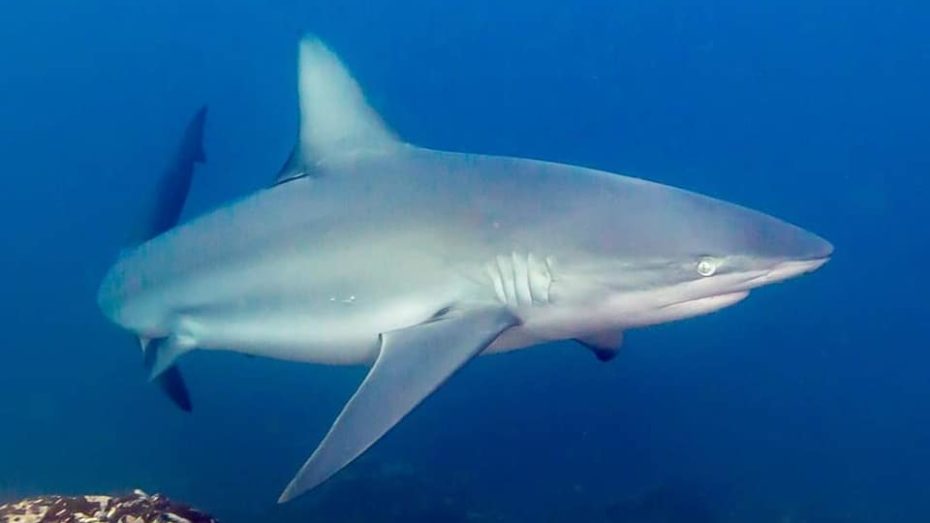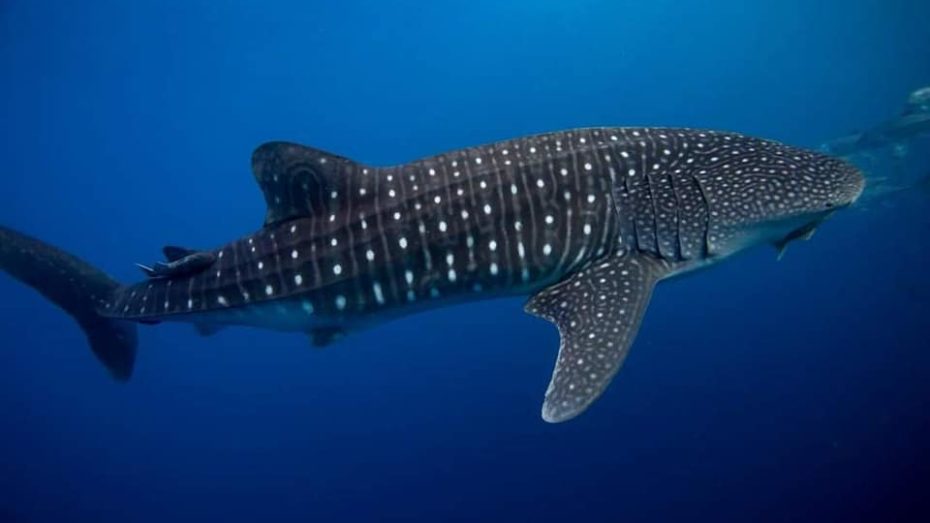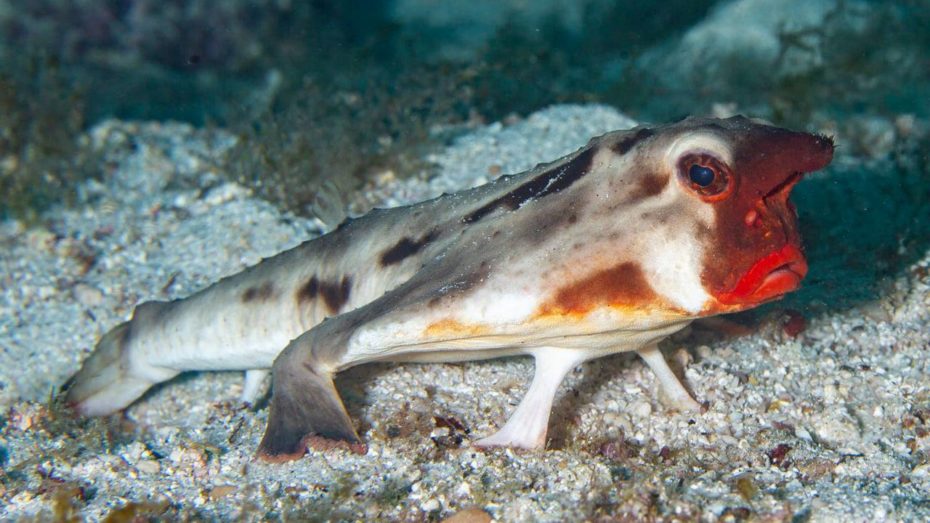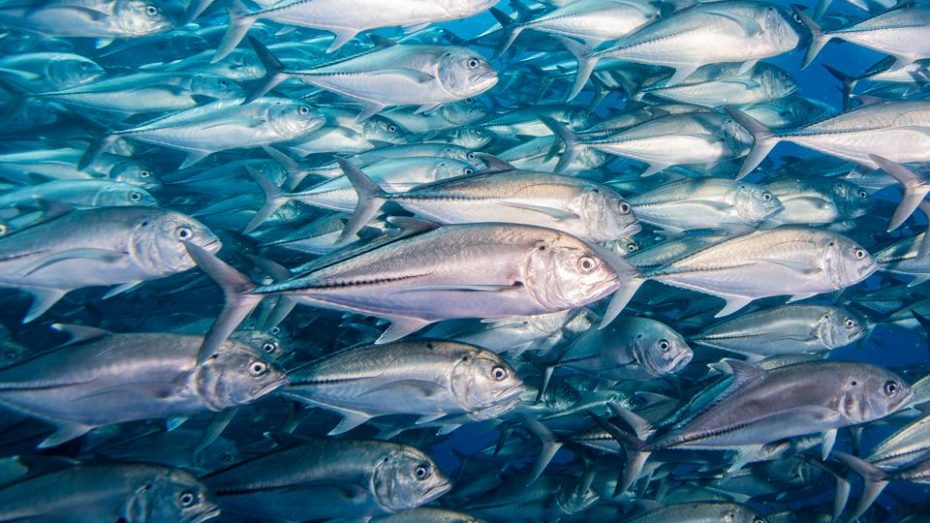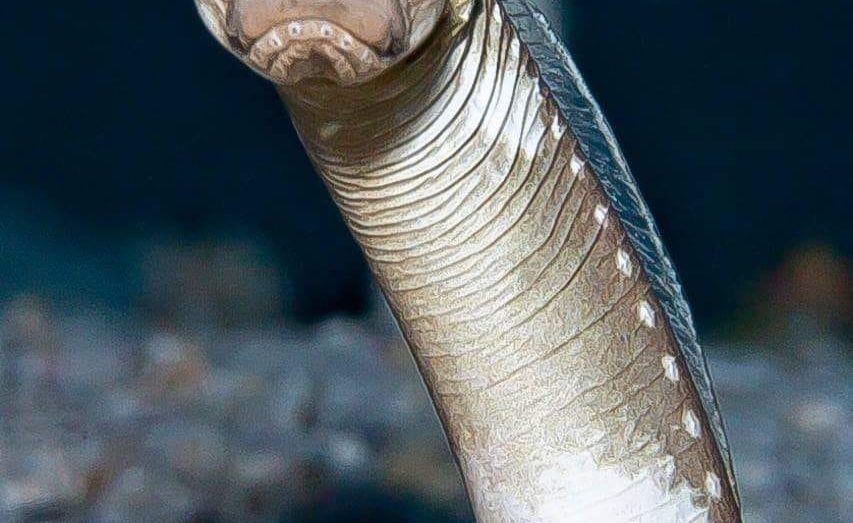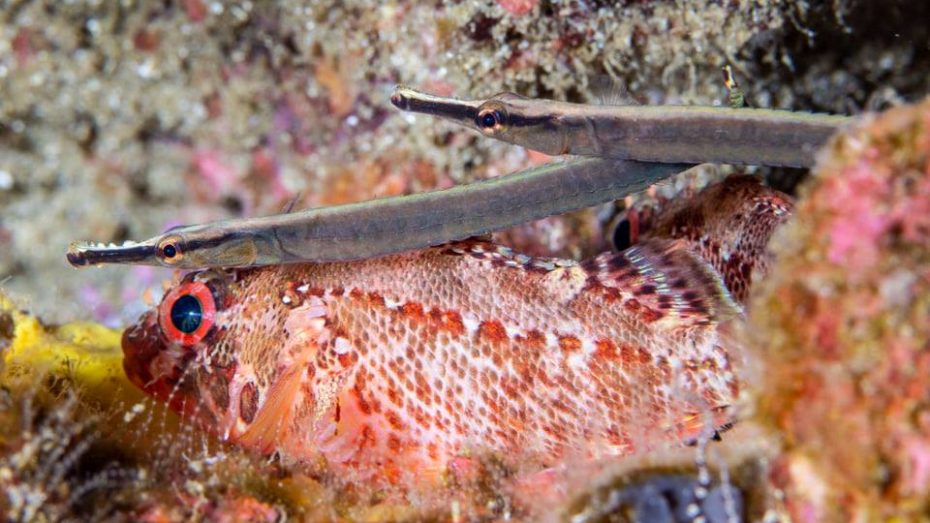Last month we welcomed quite a few travellers who had to cancel for 2020, that were now able to make it out here. It is great to see people returning, happy and safe, fulfilling their vacation dreams! We have not seen Europeans for a long time, in fact last month we saw some for the first time in over a year, many from Paris, France, it was quite exciting!
We witnessed some Pilot whales on one of the trips too which made the crew and divers all very happy. We are in whale season now so we might start to see more humpbacks, pilot whales around on the boat trips. Here’s hoping! Check out the video of our encounter below…
A scientific discovery!
Still on a high from our visit by Sea Shepherd Captain, Wyanda Lublink in July we were excited to have yet another special visit in August from Carlos and Allison Estape. The couple are underwater photographers, educators, naturalists and citizen scientists. So, as you can imagine, they came with a wealth of knowledge that we were more than happy to listen to. Academy Bay supported them and the work they do. We made bubbles together as they joined us scuba diving and we explored the ocean to identify fish and search for new species. Their incredible images have been featured internationally in books, magazines, personal collections, scientific publications and more. Take a look at their stunning photography collection here.

Carlos & Allison Estape
Carlos and Allison photograph fish to document the species in their natural habitat and collect geographical distribution data which is then published in scientific papers. They work very closely with the top fish scientist, Dr. Ross Robertson, at The Smithsonian Tropical Research Institute as field researchers who photo document fish species distribution and collect geographical distribution data. All the data and photos that they collect are donated to The Smithsonian and used in scientific papers and on their websites and they are the #1 Citizen Scientist contributors to the Smithsonian’s “Fishes of the Greater Caribbean”!
Their current project is photo documenting fish species in Tropical Western Atlantic and, and reason for visiting the Galapagos Islands, the Tropical Eastern Pacific. We actually got to witness a discovery whilst they were scuba diving with us! They documented a species in the Galapagos that is NOT known from the Eastern Pacific, in fact, the closest known range is 5,000km (3,000miles) away! Amazing! It is now under peer review.
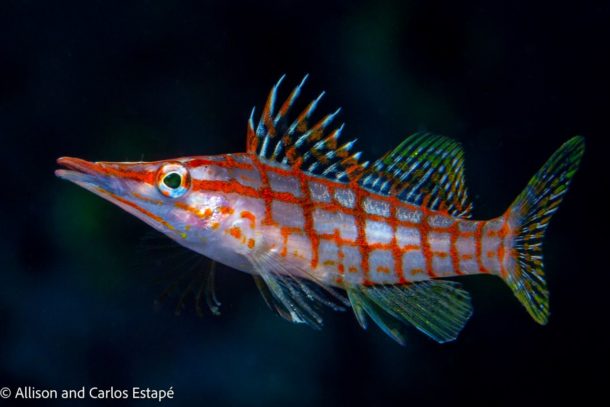
Carlos & Allison Estape
The passionate pair did not stop at diving. With the team at Academy Diving we headed to the Charles Darwin Foundation where Carlos and Allison hosted a presentation. As featured speakers, Allison and Carlos shared their amazing photos with an audience of divers, enthusiasts and scientists, told stories of their experiences and shared their knowledge of fish identification and how we can all help too. They have created the 100FishID educational website to promote citizen science by enabling divers, snorkelers and marine biology students to improve their fish ID skills. With 100FishID you can take free ID “classes” by scrolling through slideshow images of different fish species supported by informative bullet points explaining the size, coloring, stages and characteristics of each species. Take a look here.
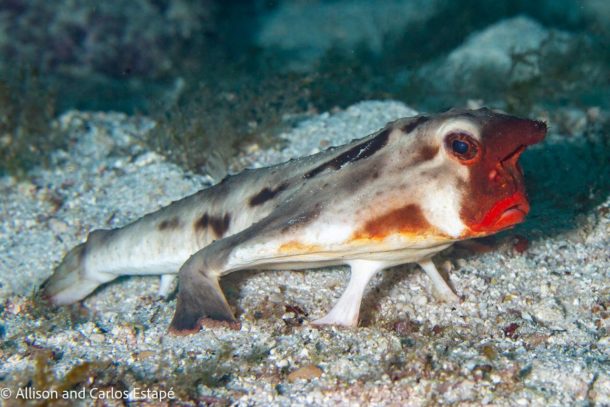
Carlos & Allison Estape
What Carlos and Allison focused on in their presentation was the new phone application from Smithsonian, “Fishes: East Pacific”. The Smithsonian Institution is the world’s largest museum, education, and research complex and this application is a great tool for underwater lovers and hosts information of 1358 species in it’s entire fauna collection. You too can be a citizen scientist. Within this application you can browse species or families or use their fantastic combination search tool. This tool helps you identify what species you saw and it can be found by name, location, shape, color pattern, color and or habitat. If you have no idea what fish you saw and want to identify it then you can start by looking at the shape selection and whittle it down until you have your species identified. Once you have found your fish you will see a series of photographs, the species key features, a detailed description and a range map. You can even learn about it’s extinction-risk category.
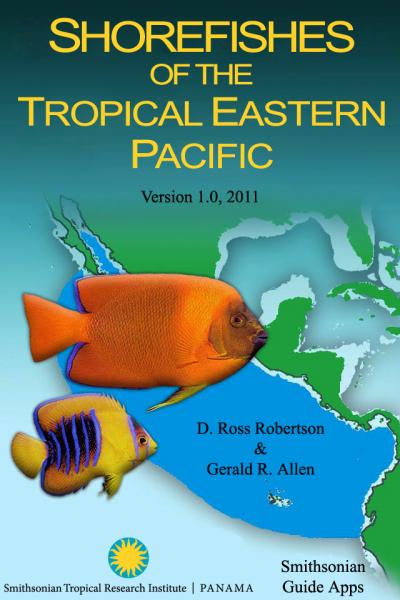 A citizen scientist is a member of the general public who collects and analyzes data relating to the natural world, typically as part of a collaborative project with professional scientists. That means you can be one too! The beauty of our modern technology means that you can do it all through your smartphone! Help Carlos and Allison build their collection by downloading the app “Fishes: East Pacific” Available for both Android or Apple.
A citizen scientist is a member of the general public who collects and analyzes data relating to the natural world, typically as part of a collaborative project with professional scientists. That means you can be one too! The beauty of our modern technology means that you can do it all through your smartphone! Help Carlos and Allison build their collection by downloading the app “Fishes: East Pacific” Available for both Android or Apple.
Be sure to add it to your list of things to have before coming to the Galapagos and let’s see what we can discover scuba diving together in the pacific!
Join Reef.org and submit fish surveys
Reef Environmental Education Foundation (REEF) protects marine life through education, service, and research. REEF facilitates programs that actively engage divers, snorkelers, and other marine enthusiasts in marine conservation. This is primarily accomplished through the Volunteer Fish Survey Project. Since its launch in 1993, this citizen science program has generated one of the largest marine life databases.
Other ways you can be a citizen scientist and help the Galapagos Wildlife are with these tools:
Shark Count is a user-friendly tool that allows divers visiting Galapagos to help monitor marine life in the Galapagos Marine Reserve. The Shark Count app displays individual reports contributed from divers at the top 20 dive sites around the archipelago. Charts and maps show the number of species observed during each dive and the best sites and times to see each species. All data is shared with the Galapagos National Park Directorate and will benefit research and management decisions focused on protecting the Reserve’s incredible marine life
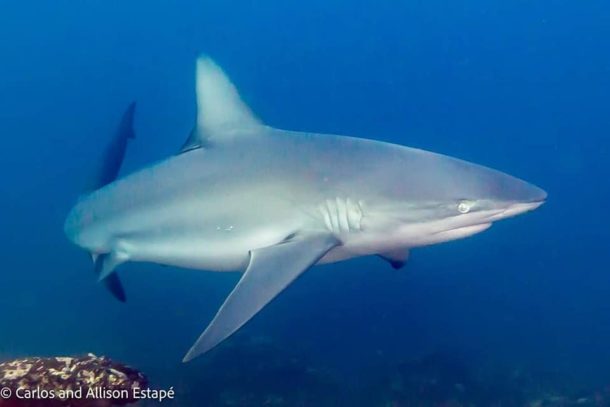
Carlos & Allison Estape
Blue-footed Booby Band Resight Project The Avian Ecology Lab under Dr. David Anderson from Wake Forest University launched the blue-footed booby band resight project to understand why the blue-footed booby population is declining. In 2011, they banded more than 1,000 blue-footed boobies and they want to know where they are now. You can help by tracking your sightings here!
Written by Charli Pocock







